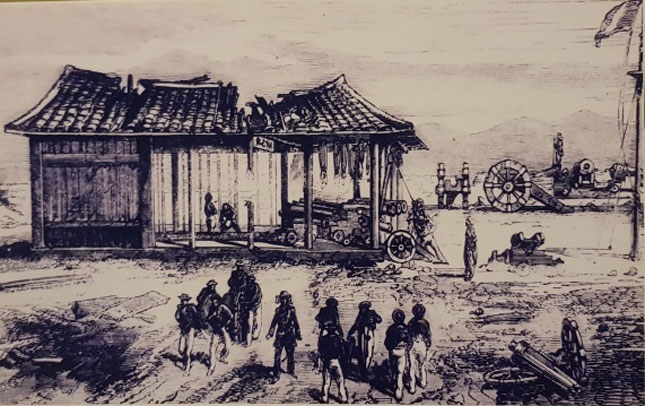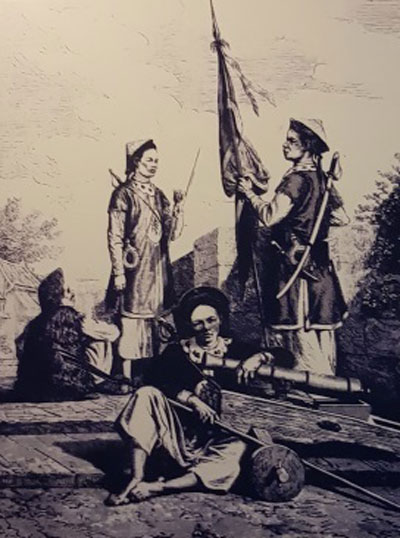Dien Hai Citadel tells exciting stories about heroic Da Nang
Work has started on a project featuring the restoration and embellishment of the Da Nang-located Dien Hai Citadel shortly after this venue received a certificate of recognition of a special national-level relic site from the Ministry for Culture, Sports and Tourism in March.
 |
| A view of the Dien Hai Citadel during the historic battles against the French-Spanish coalition forces in the 1858 - 1860 period |
The 1st stage of the restoration and embellishment project is scheduled to be completed by late October at a total cost of over 102.7 billion VND (over 4.4 million USD).
Of this, 80 billion VND (3.5 million USD) is earmarked for compensation for the displaced families, whilst the remainder is spent on restoring the damaged walls and trenches, building water supply and drainage systems, creating tree-covered areas and a parking lot, plus other auxiliary facilities.
The 2nd stage of the project with a focus on facilities inside the citadel, will take place during the 2019 - 2020 period.
During his interview with the DA NANG Newspaper, Mr Huynh Van Hung, the Director of the municipal Department of Tourism, said the restoration is being implemented in a carefully controlled way.
The intention is to preserve and reveal the aesthetic and historic value of the site. Especially, the whole process is based on respect for original material and authentic documents.
Ruins must be maintained and measures necessary for the permanent conservation, and protection of architectural features and of objects discovered must be taken. Furthermore, every means must be taken to facilitate the understanding of the monument, and to reveal it without ever distorting its meaning.
Replacements of missing parts must integrate harmoniously with the whole, but at the same time must be distinguishable from the original so that restoration does not falsify the artistic or historic evidence.
 |
| A painting featuring the image of imperial soldiers belong to the Nguyen Dynasty in 1858 |
The 2nd stage of the project will be implemented in a much tougher manner. According to the historical documents, inside the Dien Hai Citadel were a food storage, an ammunition depot, a military camp, a flag pole and other important facilities. Unfortunately, all of them have totally been ravaged by time and war.
Seminar to gather constructive opinions from the leading experts will be organised, and historical documents will be collected from both home and abroad for the restoration of the site.
By late this year, experts from the city’s Department of Culture and Sports will take a working trip to French museums and storage facilities to search for historical documents about the citadel. Most of them are the writings and paintings by the French soldiers during their visits to this site.
Another way to restore the original elements is to compare the citadel with other similar defensive structures across the country, such as the Son Tay ancient citadel in the suburbs of Ha Noi and the La Qua in Quang Nam Province.
Once completely refurbished, the citadel is expected to be a new inviting venue for both locals and visitors, especially those who show keen interest in conducting their historical and cultural research activities.
In an attempt to gain this target, a historical information interpretation centre with the application of 3D animation will be established soon.
Also, a small rough model of the citadel will facilitate the visitors to understand the reason why the Nguyen feudal dynasty chose this site for the building of the most important defensive system in Da Nang.
Situated on the western side of the Han River, the Dien Hai Citadel was one of the most important fortresses in Viet Nam in the 19th century, and was recognised as a national historical relic on 16 November 1988 by the Ministry of Culture and Information.
The over 160-year-old citadel is vivid evidence of the undaunted courage and indomitable fighting spirit of Da Nang’s soldiers and its residents during their historic battles against the French-Spanish coalition forces in the 1858 - 1860 period.